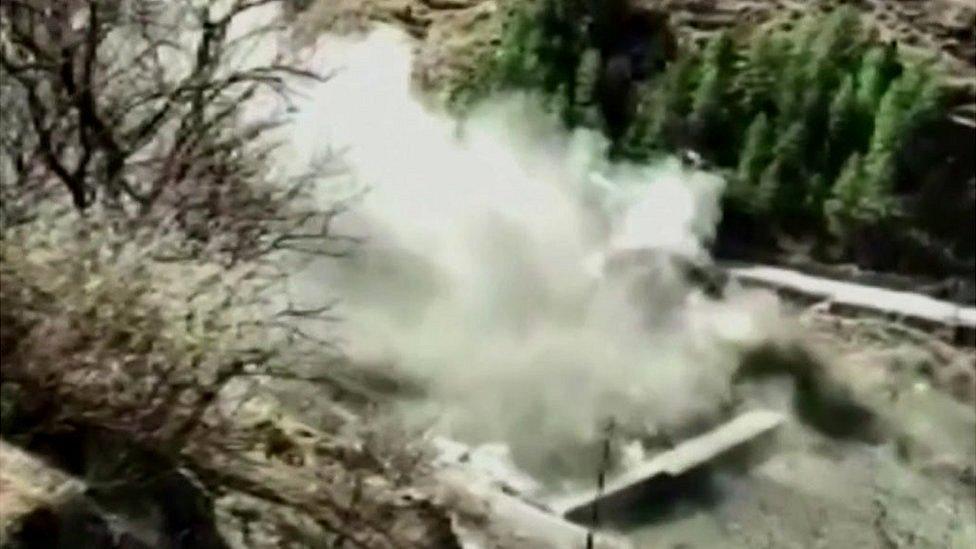Uttarakhand dam disaster: 'The most difficult seven hours of my life'
- Published

Hundreds of troops and paramilitaries have been sent to the region
On Sunday, Basant Bahadur and 11 others were trapped for hours in a tunnel in north India, hanging from iron bars in the roof while some sat on a mechanical digger above icy cold water, waiting for help to arrive.
What the 12 did not know at the time was that a piece of a Himalayan glacier was suspected of shearing off into a river and triggering a huge flood. It sent a deluge of water and debris their way.
It blocked two tunnels connected to the Tapovan Vishnugad hydro power project in the state of Uttarakhand. Basant Bahadur and his group were pulled out from the smaller tunnel. Emergency teams are now focused on rescuing 35 people believed to be trapped in the longer one, which is 8.3km (5.1 miles) long.
Here, the survivors tell BBC Hindi what happened in those terrifying hours trapped in complete darkness.
'It was the most difficult seven hours of my life'
Basant Bahadur and several others were working about 300 metres (about 900 feet) inside the 3.8km-long tunnel when the deluge hit.

Mr Bahadur managed to get a mobile signal and help eventually arrived
At first they thought that a gas cylinder had exploded leading to a larger blast which caused the tunnel to cave in. They thought that if they tried to get out of the tunnel, they could risk getting electrocuted - they could see thick smoke rising up. Their ears had become numb from the loud noises.
"Suddenly a big surge of water came rushing towards us in the dark tunnel. We were petrified," Mr Bahadur said. The workers ran towards a JCB (a mechanical digger) and climbed it to stay above the water that had flowed in.
"It was the most difficult seven hours of my life. But we did not lose hope. We kept encouraging ourselves."
Luckily, Mr Bahadur had his mobile phone with him.
The mobile network in the blocked tunnel was patchy. Finally, they managed to make contact with emergency teams who pulled them out using ropes.
'The water came gushing into the tunnel'
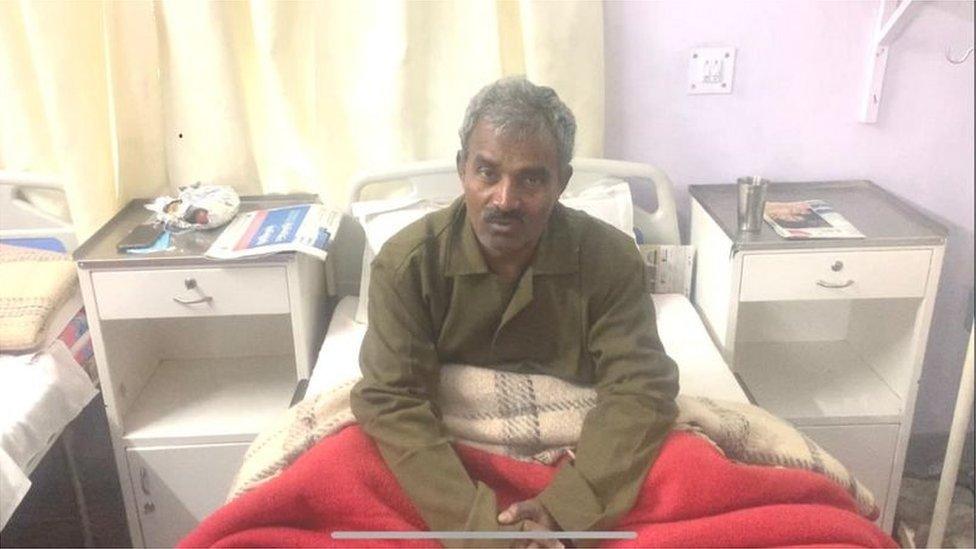
Mr Reddy, a geologist, was working 350m inside the tunnel when the deluge hit
Among those rescued was geologist Srinivas Reddy. He was working in the tunnel, some 350m inside.
A worker came running into the tunnel shouting for everyone to come out because the water in the nearby river was rapidly rising. But Mr Reddy and the workers didn't get enough time to escape.
"The water came gushing into the tunnel straight at us. We grabbed iron bars installed on the ceiling of the tunnel and pulled ourselves up and waited for the water level to recede."
Allow X content?
This article contains content provided by X. We ask for your permission before anything is loaded, as they may be using cookies and other technologies. You may want to read X’s cookie policy, external and privacy policy, external before accepting. To view this content choose ‘accept and continue’.
They survived by hanging onto the iron bars. After a while, when they saw that the water level had stopped rising, they made their way towards the entrance.
They were moving in complete darkness because the deluge of debris and water had cut the power supply to the tunnel. Some of the trapped workers were feeling breathless.
"We were in cold water. Our feet were freezing. Water and debris had filled our boots, which were weighing us down. Our feet started swelling," Mr Reddy said.
To keep spirits high, he said he started singing as they waited in the dark.
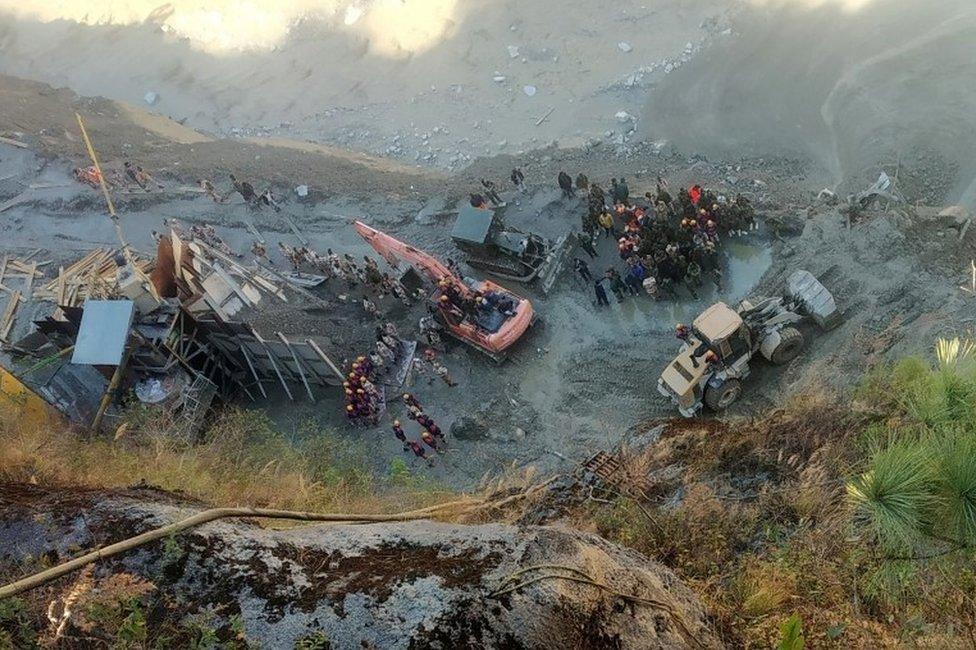
Rescue workers are trying to clear the blocked tunnel in Uttarakhand
"I started singing and started reciting poetry to keep everyone cheered up. Every now and then, we all did a few exercises," he said. "I wanted everyone to remain active and alert so that we could make our way out of the tunnel."
The workers kept trying to contact rescue teams outside the tunnel but couldn't get a mobile signal. Finally, they managed to get a call out and were pulled to safety.
'The water hit us - the power went out'
Virender Kumar Gautam was one of the last to be rescued.
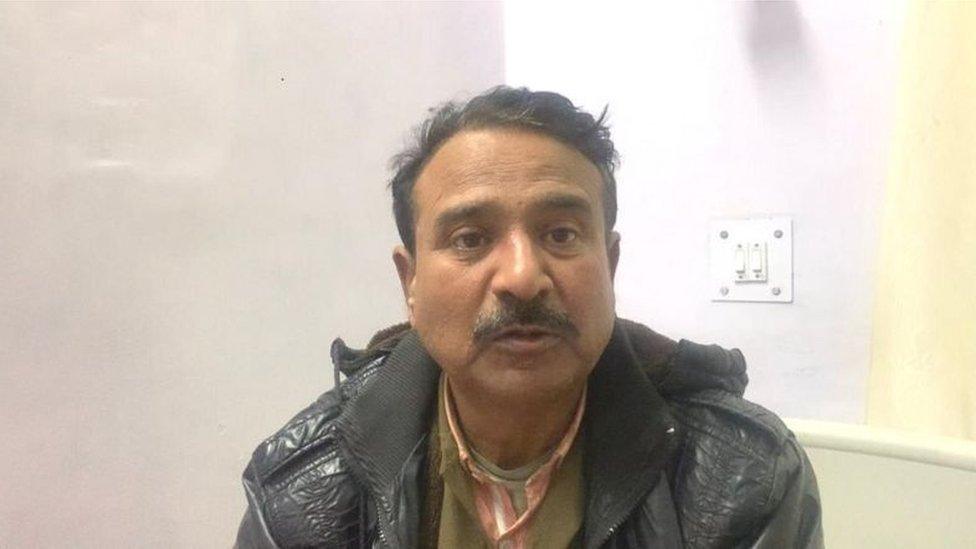
Mr Gautam was among the last to be brought to safety
A video of him raising his hands in the air in triumph, exclaiming with joy after being pulled out by emergency workers has gone viral.
He was in the tunnel when the water came. "As soon as the water hit us, the power went out. In the distance we could hear loud noises."
Plunged into darkness, the tunnel looked terrifying as the water level rose.
Mr Gautam though that perhaps a cloud burst had caused the flash flood. For 15 minutes, the water levels kept rising. Then it stopped.
Watch the moment a man trapped inside the tunnel is rescued
"When the water flow started slowing down, we knew that the worst had passed. I told all my colleagues to be patient and that we would escape the tunnel," he told BBC Hindi.
They all held on to iron bars on the side of the tunnel and slowly made their way towards the entrance. The workers tried to make contact with rescue teams but like the others they struggled to get mobile connectivity.
They kept trying, however, and after a long wait, they were able to make contact.

- Published9 February 2021
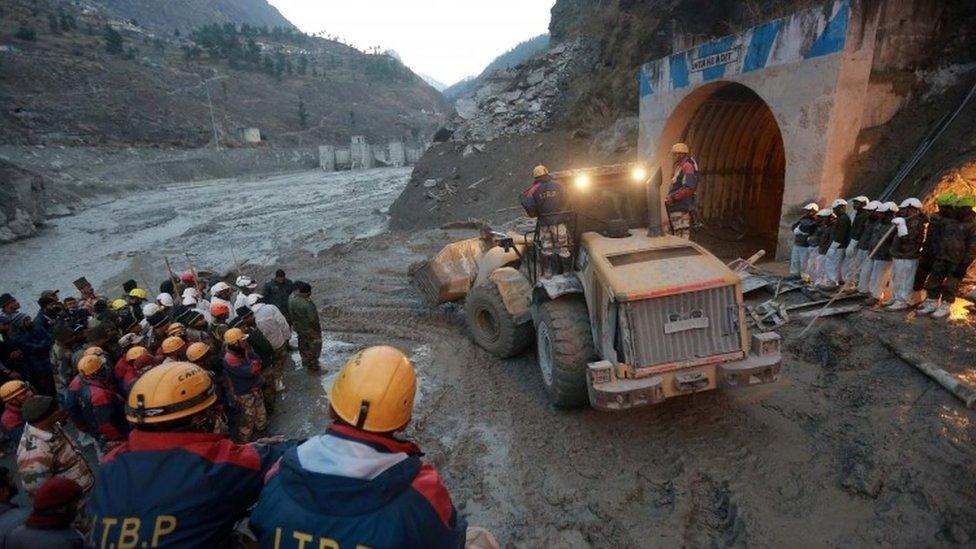
- Published7 February 2021
